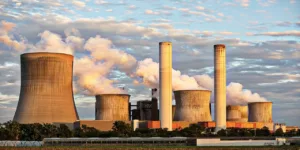The earth houses millions of humans, animals, and plants. It is our home, one that needs to be left behind for future generations to come. However, the Earth also needs to sustain, be replenished and protect just like a child needs care, support and love to grow old. More so, the environment that constitutes planet earth should never be harmed or damaged.
But then again, when do things happen as you want them to? Our Planet Earth is fighting to survive the marks left behind by the many generations before us and what our generation is unfolding now. Industrialization, rising population, and wars have led to global warming, ozone layer depletion, and widespread diseases. Mankind struggles to improve the situation, especially when the most difficult battle is about understanding and analyzing the problem first without directly jumping to conclusions.
The main problem is pollution. Yes, pollution of various types, air, land, and water can lead to a lack of clean drinking water, air-borne diseases, and rising world temperatures. Pollution acts as the root cause of all environmental issues, right from acid rain to groundwater depletion. However, tackling tangible pollution of land and water is comparatively easier than controlling air pollution, which doesn’t stick to one region or a single country and keeps rapidly impacting every life in its path. Moreover, measuring pollution levels via equipment is easier when it comes to water or land, but finding the right equipment for measuring air pollution is slightly tougher as it requires precision and effectiveness.
How can you tackle air pollution?
The first step to tackling air pollution is understanding the causes behind it, considering how there are many activities, both small and large scale ones that lead to it. Secondly, these causes have to be interpreted in terms of their impact range, individually and over a period of time. After which analysis can be done and possible solutions to fight each issue can be raised.
However, all these steps can only exist and be performed if we have the right tools to know the air quality around us. Air quality monitoring system is what should be ground zero, a simple yet effective tool that can monitor air levels, sample it, find the number of pollutants in the air and give conclusive results. This means that an air quality monitoring system focuses on finding out whether the air in a particular region has crossed the quality standard norms and has become harmful for the survival of mankind or not.
The infrastructure behind an air quality monitoring system?
An air quality monitoring system works on sampling the air around it, mostly via multiple inlets. Each inlet is made for a sperate purpose, be it gas or dust. Now, this sampled air is later passed through special sensors, for example-Polludrone by Oizom, where the different pollutants like CO2, CO, NO2, O3 are measured along with levels of noise, humidity, UV-radiation and temperature.
One each parameter is measured, numerical data is collected about them, noted down directly by the air quality monitoring system itself. Now, additionally many modern-day air quality monitoring systems provide a control center, mobile application and secured APIs to get access to the data via which all further analysis and decision making are done. This makes the system real-time and specific, allowing each user to gain complete benefits out of it. Although, this is how an automatic air quality monitoring system works, there are still countries and places where an old, labor-based and less accurate monitoring system exists which follows similar steps but uses human efforts, delaying the process and linking human error with the results.
Where can an air quality monitoring system be used?
1. Smart Cities
Installing an air quality monitoring system at multiple locations can help the Government build smart cities where the people will be aware of the air quality, be capable of taking necessary precautions and obtain insights on pollution controls. Having a portable and durable monitoring system installed at regular distances can combat the harmful effects of industrialization, guide filter, and mask sales and reduce acid rain.
2. Construction sites
Construction sites, be it roadways or buildings usually lead to emission of a lot of gases, dust particles, and smoke. An onsite air quality monitoring system can help workers know when the air pollution level is exceeding allowable limits, when the smoke filters have stopped working or when the surrounding plant life might get permanently damaged.
3. Student life
Various schools and institutions should install an air quality monitoring system to know how the weather works and impacts students. An air quality monitoring system should be used to decide schedules, make decisions on indoor and outdoor activities, have events and increase healthcare activities. This way, faculty and students, both get better chances at fighting air-borne diseases in the long run.
4. Organizations
Both Government and environmentalists use an air quality monitoring system to collect data that can be used in council meetings, weather meets and future predictions. Environmentalists make their suggestions, research papers and reports using statistical analysis on air quality data, which in turn form as the base for actions taken against air pollution.
Opting for a durable air quality monitoring system that can handle changing and extreme weather conditions, comes with additional features and does not waste electricity should be what one should look for. Not only does innovation matter, how is it used, where is it used and why is it used also counts.
You can also install an air quality monitoring system at home or nearby places, allowing you to know when is the air ambient and when do you need to wear an anti-pollution mask. Moreover, it is also useful if you’re considering a location change, have outdoor plans or don’t want to worsen your health. Air quality monitoring system, here to save the day!








